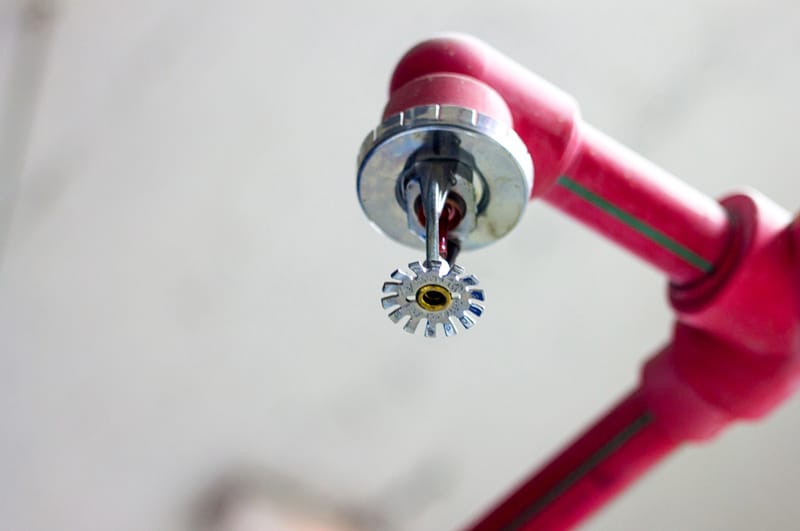Your building’s fire sprinkler system is what works to keep your people and property safe. In the event of a fire, the fire sprinkler system activates to ensure anyone in the building has time to get out and to minimize damages until the fire department can arrive. But are you aware of the different types of fire sprinklers? Depending on your building and its application, you might require either standard response or quick response sprinklers.
Quick Response vs. Standard Response Sprinkler Heads: What’s the Difference?
The basic difference between quick and standard response sprinkler heads, as you might expect, is how quickly they activate. In basic terms, all sprinkler heads are activated when temperatures rise to a point where fluid in a bulb in the sprinkler expands, exploding the bulb and allowing water to rush through the sprinkler. Quick response sprinkler heads feature a 3mm bulb, while standard response sprinkler heads feature a 5mm bulb. The smaller bulb in a quick response sprinkler means that it will activate much more quickly than the standard sprinkler head.
While the primary difference between quick response and standard response sprinkler heads is their activation time, each type of sprinkler is used in different ways, and for different applications. Let’s take a close look at each quick response and standard response sprinkler heads.
Quick Response Sprinkler Heads
Quick response sprinklers are used primarily in light-hazard applications. These are buildings where many people are present, like schools, office buildings, healthcare facilities, and more. In the event of a fire, the primary concern in a populated building is getting people out safely.
Quick response sprinkler heads activate quickly, but they also work to discharge water higher up on the ceiling than a standard sprinkler head. This cools the ceiling and surrounding walls, helping prevent flash-over and keeping the fire from rising in temperature and severity. This application method is what makes quick response sprinkler heads much better at giving people the time they need to evacuate the building safely.
Testing requirements: Quick-response sprinklers should be tested after 20 years, and at 10-year intervals after that.
Standard Response Sprinkler Heads
Standard response sprinkler heads take just a little bit longer to activate than quick-response sprinkler heads, but they also apply water differently. Unlike a quick-response sprinkler, which is designed to spray ceilings and walls, standard response sprinkler heads work to wet and cool the areas surrounding a fire. This takes away the fire’s fuel source, slowing the spread of flames.
Standard response sprinklers are best for commercial and industrial buildings like warehouses, where few people are on-site. Since there is less of a concern for controlling the severity of the fire, standard response sprinkler heads can focus on slowing the spread of a fire, containing the damage, and buying time for the fire department to get to the scene and put it out.
Testing requirements: Standard response sprinkler should be tested after 50 years, and at 10-year intervals after that.
Quick Response vs. Standard Response Sprinkler Heads: Which is Best for My Application?
When it comes to choosing between quick response and standard response sprinkler heads, general guidelines dictate that quick response sprinklers are best for heavily-populated applications, while standard response sprinklers are best for commercial and industrial applications. That said, the best way to choose a sprinkler system for your application is to work directly with a fire protection expert who can design a fire sprinkler system that’s perfectly suited to your application and the fire hazards present at your facility.
No matter what type of sprinkler head you need, Vanguard Fire & Security is your one-stop solution. Our team of fire protection experts design, install, test, and service a variety of different fire sprinkler systems, and would be happy to work with you to determine which sprinkler head is best for your application. Give us a call at 888-444-8719 or contact us online today for more information.


